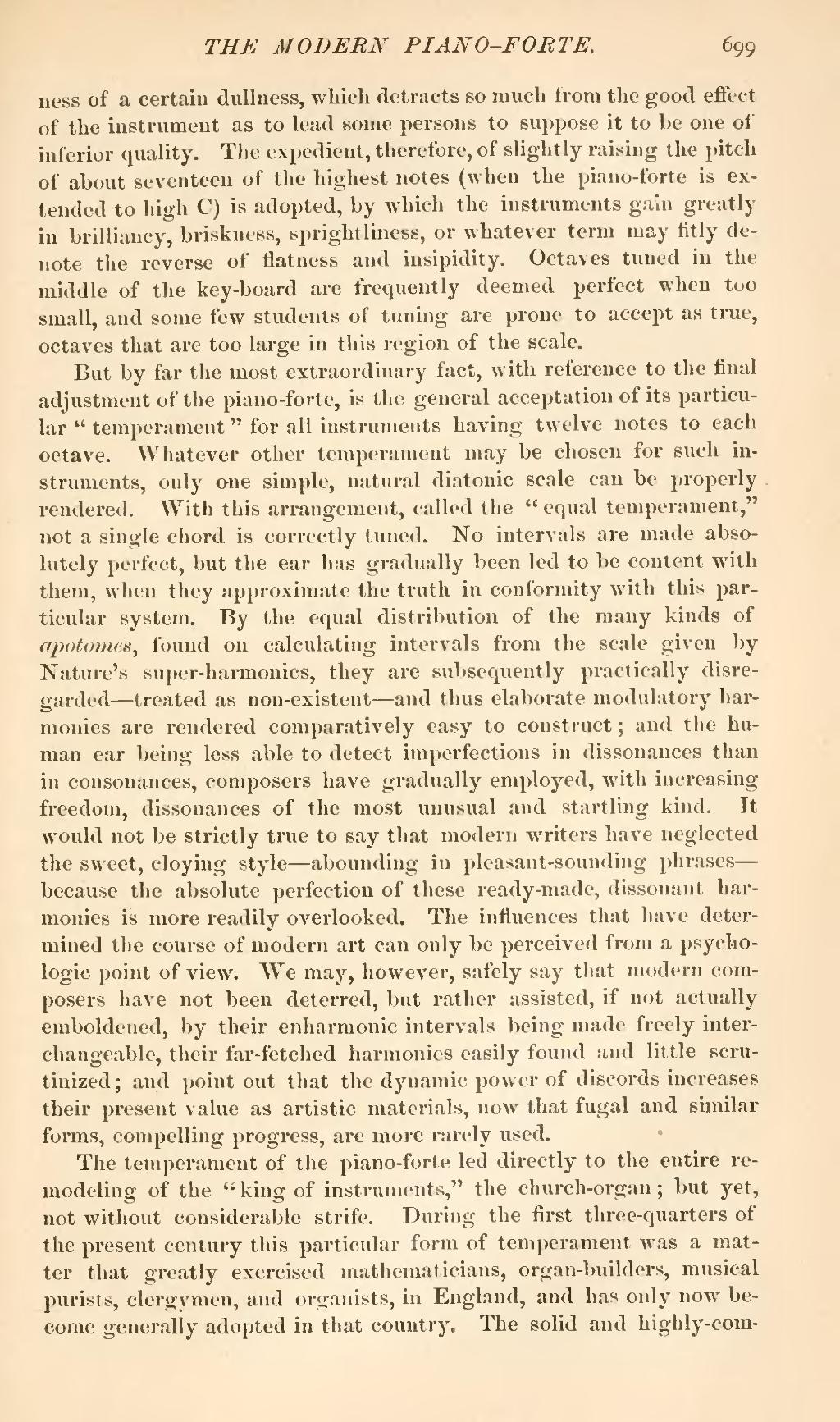ness of a certain dullness, which detracts so much from the good effect of the instrument as to lead some persons to suppose it to be one of inferior quality. The expedient, therefore, of slightly raising the pitch of about seventeen of the highest notes (when the piano-forte is extended to high C) is adopted, by which the instruments gain greatly in brilliancy, briskness, sprightliness, or whatever term may fitly denote the reverse of flatness and insipidity. Octaves tuned in the middle of the key-board are frequently deemed perfect when too small, and some few students of tuning are prone to accept as true, octaves that are too large in this region of the scale.
But by far the most extraordinary fact, with reference to the final adjustment of the piano-forte, is the general acceptation of its particular "temperament" for all instruments having twelve notes to each octave. Whatever other temperament may be chosen for such instruments, only one simple, natural diatonic scale can be properly rendered. With this arrangement, called the "equal temperament," not a single chord is correctly tuned. No intervals are made absolutely perfect, but the ear has gradually been led to be content with them, when they approximate the truth in conformity with this particular system. By the equal distribution of the many kinds of apotomes, found on calculating intervals from the scale given by Nature's super-harmonics, they are subsequently practically disregarded—treated as non-existent—and thus elaborate modulatory harmonies are rendered comparatively easy to construct; and the human ear being less able to detect imperfections in dissonances than in consonances, composers have gradually employed, with increasing freedom, dissonances of the most unusual and startling kind. It would not be strictly true to say that modern writers have neglected the sweet, cloying style—abounding in pleasant-sounding phrases—because the absolute perfection of these ready-made, dissonant harmonies is more readily overlooked. The influences that have determined the course of modern art can only be perceived from a psychologic point of view. We may, however, safely say that modern composers have not been deterred, but rather assisted, if not actually emboldened, by their enharmonic intervals being made freely interchangeable, their far-fetched harmonies easily found and little scrutinized; and point out that the dynamic power of discords increases their present value as artistic materials, now that fugal and similar forms, compelling progress, are more rarely used.
The temperament of the piano-forte led directly to the entire remodeling of the "king of instruments," the church-organ; but yet, not without considerable strife. During the first three-quarters of the present century this particular form of temperament was a matter that greatly exercised mathematicians, organ-builders, musical purists, clergymen, and organists, in England, and has only now become generally adopted in that country. The solid and highly-com-
